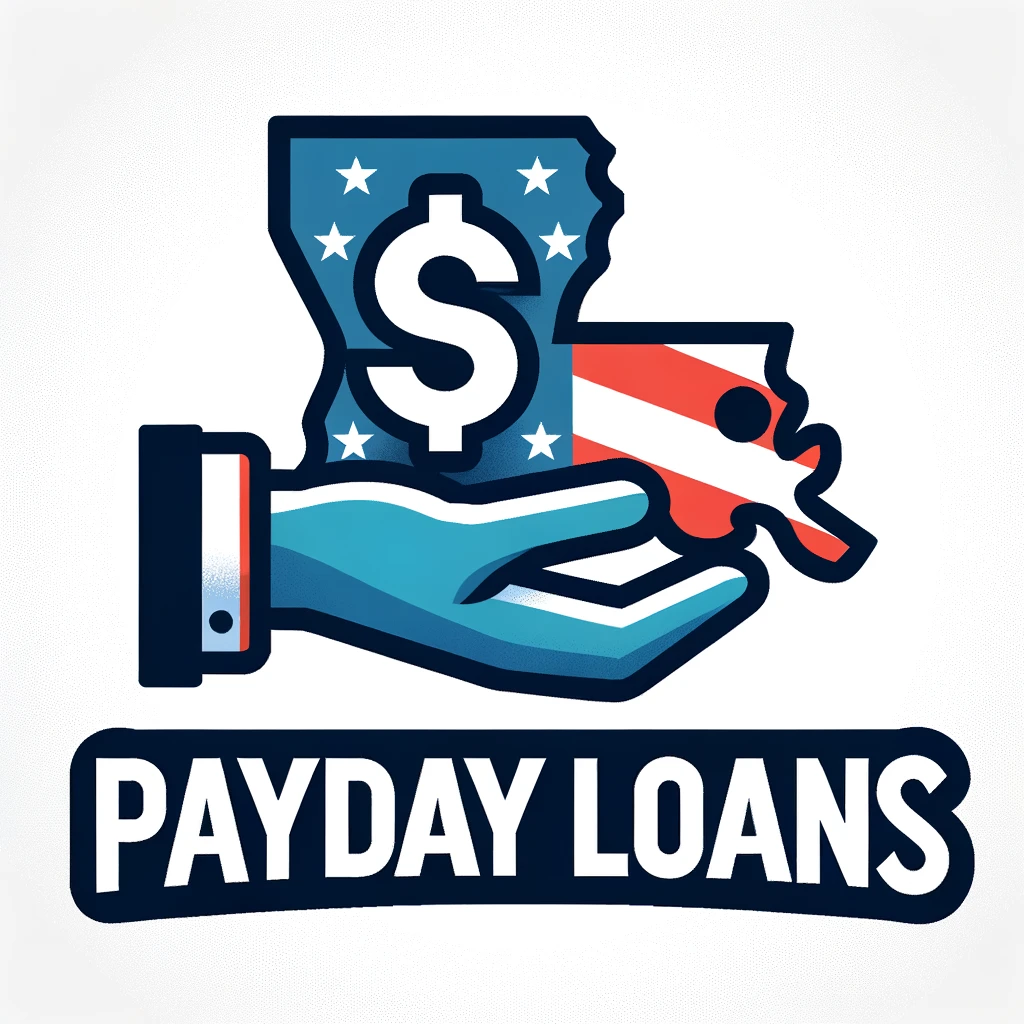Essential Points
- Purpose: Payday loan disclosures are documents that outline loan terms, fees, and repayment schedules, ensuring transparency for borrowers.
- Importance: Reading these disclosures helps borrowers avoid unexpected fees and make informed financial decisions.
- Legal Mandates: Federal laws require lenders to provide clear disclosures, protecting consumers from hidden fees.
- Expert Assistance: Financial experts can clarify complex terms in disclosures, aiding borrowers in understanding their rights and obligations.
Introduction to Payday Loan Disclosures
What Are Payday Loan Disclosures?
Payday loan disclosures are documents provided by lenders that detail the terms, fees, and repayment schedules associated with a loan. These disclosures are crucial for borrowers, as they outline the essential components of the loan agreement, ensuring transparency and informed decision-making. A thorough understanding of these disclosures can significantly impact financial health and decision-making regarding borrowing. Key components of disclosures include:
- Loan Amount
- Interest Rate (APR)
- Repayment Schedule
- Fees (e.g., origination fees, late fees)
- Default Consequences
- Borrower’s Rights
- State-Specific Regulations
- Contact Information for the Lender
Each element plays a vital role in the overall understanding of the loan, allowing borrowers to assess their options critically before signing any agreements.
Importance of Reading Disclosures
Reading payday loan disclosures is essential for effective financial planning and avoiding unexpected fees that could exacerbate financial strain. By understanding the terms laid out in these documents, borrowers can make informed decisions that align with their financial goals and personal circumstances. This comprehension is vital in defending against predatory lending practices, which can trap borrowers in cycles of debt.
Legal Requirements for Disclosures
Federal laws, such as the Truth in Lending Act, mandate that lenders provide clear and comprehensive disclosures. These regulations ensure transparency and protect consumers from hidden fees and unfavorable terms that may not be initially apparent. Understanding these legal requirements is essential for borrowers who want to advocate for their rights and make informed choices within the lending landscape.

Expert Insights on Understanding Payday Loan Disclosures
How Can Experts Help with Disclosures?
Experts can elucidate complex terms and conditions found in payday loan disclosures, allowing borrowers to grasp their rights and obligations fully. For instance, a financial advisor may explain how the APR affects total repayment costs or clarify the ramifications of defaulting on a loan. In real-world scenarios, borrowers have benefited from expert advice by avoiding predatory loans that initially appeared affordable. An informed perspective can guide borrowers toward more beneficial financial choices, reducing their risk of falling into debt traps.
Obtaining expert insights can significantly demystify the often convoluted language used in loan documents, empowering borrowers to make decisions grounded in knowledge rather than confusion. This clarifying role of experts is especially vital for individuals who may not have extensive experience with financial agreements, ensuring that they understand every aspect of their potential obligations.
What Are Common Misunderstandings?
Many borrowers commonly overlook critical components of payday loan disclosures, one of the most prevalent misunderstandings being the Annual Percentage Rate (APR). Many fail to recognize how the APR reflects the total cost of borrowing, including interest and fees, which can lead to unexpected financial burdens. By clarifying these points, experts can help borrowers navigate the potential pitfalls associated with payday loans, such as accumulating debt due to high fees and interest rates.
Another common misunderstanding involves the total cost of the loan. Borrowers may focus solely on the loan amount without fully grasping the implications of the repayment terms and associated fees. This lack of understanding can lead to significant financial strain, especially when unexpected fees arise. By addressing these misunderstandings, borrowers can avoid pitfalls that could jeopardize their financial stability.
Strategies for Effective Disclosure Review
Reviewing payday loan disclosures effectively requires a strategic approach. Experts recommend that borrowers take the time to read disclosures thoroughly and not rush the process. This careful examination allows borrowers to catch potential red flags and understand the lending terms fully. Here are some actionable steps for a successful review:
- Set aside dedicated time to read each disclosure carefully.
- Highlight or take notes on key terms and conditions.
- Prepare a list of questions to ask the lender.
- Compare disclosures from multiple lenders to gauge differences.
Asking questions is a fundamental strategy; borrowers should feel empowered to seek clarification on any terms that appear vague or concerning. Comparisons among different lenders can reveal more favorable terms or lower fees, contributing to informed decision-making.
Key Components of Payday Loan Disclosures
Loan Amount and Repayment Terms
Loan amount and repayment terms are critical elements detailed in payday loan disclosures. These disclosures specify the actual sum being borrowed, along with the repayment schedule, which outlines when payments are due and the consequences of late payments. Understanding these terms is crucial for managing the loan effectively.
For instance, borrowers should be aware of how long they have to repay the loan and the total number of payments required. In many cases, payday loans are structured to be short-term, requiring repayment within a few weeks, often on the borrower’s next payday. Knowing the repayment terms, including whether there are options to extend the loan, can help borrowers avoid default and its associated penalties. Additionally, a clear understanding of any penalties for late payments is essential, as these can significantly increase the overall cost of the loan.
Fees and Interest Rates
One of the most critical aspects of payday loan disclosures is the inclusion of fees and interest rates. Disclosures must provide a comprehensive breakdown of all fees, such as origination fees and administrative costs, alongside the interest rate or the APR. This transparency is vital for borrowers to calculate the total costs associated with the loan accurately.
For example, borrowers often fail to account for the total repayment amount, which includes both the principal and the accrued interest, plus any applicable fees. Understanding these fees can prevent unexpected expenses that could lead to financial distress. Borrowers should take the time to understand how the interest rate is applied—whether it is a fixed or variable rate—and how it influences the total cost of the loan. This knowledge empowers borrowers to make informed choices and helps them avoid loans that may lead to financial hardship.
What Happens if You Default?
Defaulting on a payday loan can have severe consequences, making it essential for borrowers to understand these risks fully. Disclosures typically outline what happens if a borrower fails to make payments on time. Consequences of default can include additional fees, damage to credit scores, and potentially legal action from the lender.
For instance, many lenders may impose late fees that can escalate quickly, compounding the total amount owed. Furthermore, a default can negatively impact the borrower’s credit report, making it more difficult to secure financial products in the future. In some cases, lenders may pursue collection actions, including lawsuits, to recoup their losses. Understanding these ramifications can serve as a critical motivator for borrowers to remain on top of their repayment schedules, ensuring financial responsibility.
How to Use Payday Loan Disclosures Effectively?
Comparing Different Lenders
Using payday loan disclosures effectively involves comparing different lenders to identify the most favorable loan options. Borrowers should focus on essential factors such as fees, interest rates, and repayment terms outlined in the disclosures. This comparative analysis is vital in choosing a loan that aligns with their financial needs and circumstances.
When reviewing disclosures from multiple lenders, borrowers should create a comparison chart that highlights the differences in terms and costs. This method allows for easy visual assessment and quick decision-making. Borrowers should not hesitate to leverage this information to negotiate better terms with lenders who may be willing to offer more competitive rates or reduced fees to secure business.
Negotiating Loan Terms
Effective use of payday loan disclosures can empower borrowers to negotiate loan terms with lenders. While many may assume that loan terms are fixed, disclosures can reveal that some lenders may be open to negotiation based on the information disclosed.
For instance, if a borrower is able to provide a solid financial history or demonstrate their ability to repay, they may successfully negotiate lower interest rates or reduced fees. Understanding the terms laid out in the disclosures gives borrowers leverage in these discussions, allowing them to advocate for better conditions. This negotiation process can significantly enhance the affordability of a loan, making it more manageable to repay without falling into a cycle of debt.

Planning Repayment Strategies
Using payday loan disclosures to formulate repayment strategies is key to preventing defaults and additional fees. Borrowers should create a budget that incorporates the loan repayment, ensuring that they allocate sufficient funds to meet their obligations. This planning process is essential for maintaining financial stability and avoiding unnecessary penalties.
Borrowers can utilize their knowledge of the repayment terms outlined in the disclosures to set up reminders for payment dates or even automate payments if possible. Understanding the total amount owed, including interest and fees, can help borrowers prioritize loan repayment in their overall financial planning. By developing a clear strategy, borrowers can mitigate the risks associated with payday loans and work towards achieving financial independence.
Understanding Loan Costs
Carefully reviewing disclosures to comprehend all costs associated with payday loans is imperative to avoid unexpected expenses. Borrowers must recognize that the total cost includes not only the principal amount borrowed but also all fees and interest rates stipulated in the loan agreement.
Understanding these costs impacts how borrowers approach their decisions about whether to take out a payday loan. It is crucial for borrowers to scrutinize disclosures for hidden fees that may not be immediately apparent, ensuring that they are fully aware of their financial commitments. This vigilance can help individuals avoid falling into financial traps and making decisions that could jeopardize their economic well-being.
Trusted Strategies for Understanding Payday Loan Disclosures
Utilizing Online Resources
Online resources can be invaluable in assisting borrowers in understanding payday loan disclosures. Many websites provide guides and tools designed to simplify complex financial information, helping borrowers navigate the intricacies of disclosures. These resources can enhance decision-making by providing context and clarification around the terms and conditions presented in loan documents.
However, not all online resources carry the same level of reliability. Borrowers should seek out reputable sites affiliated with financial institutions, consumer advocacy groups, or governmental agencies. Expert analysis on the reliability of these resources is crucial, as accurate information can empower borrowers to make informed financial decisions while avoiding pitfalls associated with misinformation.
What Role Do Financial Advisors Play?
Financial advisors play a pivotal role in helping borrowers understand and utilize payday loan disclosures effectively. They provide personalized advice that considers an individual’s financial situation, guiding borrowers through the complexities of payday loans and their implications for financial health.
Advisors can help borrowers interpret disclosure documents, ensuring that their clients grasp the significance of the terms outlined. This tailored support can be critical in empowering borrowers to make decisions that align with their long-term financial goals while avoiding the traps often associated with payday lending.
Community Workshops and Seminars
Local community workshops and seminars often cover essential topics, such as understanding payday loan disclosures. These events provide valuable insights and foster community support, allowing attendees to ask questions and learn from experts in a collaborative environment.
Participating in these workshops can equip borrowers with the tools to better understand their rights and obligations when entering into loan agreements. Engaging with peers facing similar financial challenges creates a supportive atmosphere where knowledge sharing can lead to wiser borrowing choices and financial empowerment.
Analyzing Loan Agreement Documents
Carefully analyzing loan agreement documents is a critical step in understanding payday loan disclosures. Borrowers should pay close attention to key sections that outline fees, repayment schedules, and the consequences of default.
By dissecting these documents, borrowers can identify potential red flags and ensure they are fully informed before committing to a loan. Key areas to focus on include the breakdown of costs, the timeline for repayment, and any clauses that may impose additional fees for late payments or default. This level of scrutiny can safeguard borrowers against unfavorable terms and contribute to more informed borrowing decisions.
Protecting Yourself with Payday Loan Disclosures
Recognizing Predatory Lending Practices
Disclosures can serve as a tool for identifying predatory lending practices, such as hidden fees or exorbitant interest rates. Being aware of these signs can protect borrowers from entering into agreements that could lead to financial disaster.
Common red flags to look for include loans with excessively high APRs compared to industry standards, unclear terms, or vague language that may obfuscate the true costs involved. Understanding these indicators empowers borrowers to walk away from offers that do not align with fair lending practices, ensuring they make choices that support their financial well-being.
How Can You Report Violations?
If a lender fails to provide clear disclosures or engages in deceptive practices, borrowers have the right to report these violations to regulatory bodies such as the Consumer Financial Protection Bureau (CFPB). This reporting mechanism is essential for holding lenders accountable and protecting fellow borrowers from potentially harmful practices.
Complaints can be filed online, allowing borrowers to detail their experiences and express concerns regarding non-compliance with disclosure laws. By advocating for themselves and others, borrowers contribute to a broader movement towards transparency and ethical lending practices in the payday loan industry.
Building a Case for Dispute
Keeping detailed records of disclosures and communications with lenders is instrumental in building a case for dispute in the event of unfair practices. This documentation serves as crucial evidence in legal contexts, providing a foundation for borrowers to challenge misleading terms or conditions.
Borrowers should retain copies of loan disclosures, records of payments made, and any correspondence with lenders. This thorough record-keeping is essential for protecting oneself against unfair lending practices and ensuring that borrowers can defend their rights effectively when necessary.

FAQs
What is a payday loan disclosure?
A payday loan disclosure is a document provided by lenders that details the terms, fees, and repayment schedules associated with a payday loan. It aims to inform borrowers about their obligations and protect their rights.
Why is it important to read payday loan disclosures?
Reading payday loan disclosures is crucial for borrowers to understand the terms of the loan, including fees and repayment schedules, enabling informed decision-making and helping to avoid unexpected financial burdens.
What should I look for in a payday loan disclosure?
In a payday loan disclosure, borrowers should look for the loan amount, interest rates, fees, repayment terms, and any penalties for late payments or default. Understanding these components is vital for responsible borrowing.
Can I negotiate the terms of a payday loan?
Yes, borrowers can negotiate payday loan terms. By leveraging information from disclosures, borrowers may be able to secure lower interest rates or reduced fees based on their financial history or negotiation skills.
What happens if I default on a payday loan?
If you default on a payday loan, you may face additional fees, damage to your credit score, and potential legal action from the lender. Understanding these consequences can help prevent default.
How can I report a lender for not providing disclosures?
If a lender fails to provide disclosures, borrowers can report them to the Consumer Financial Protection Bureau (CFPB) online. This helps address unethical lending practices.
What are the risks of payday loans?
Risks of payday loans include high interest rates, hidden fees, potential for debt cycles, and negative impacts on credit scores if payments are missed or default occurs.
How can I improve my understanding of payday loan disclosures?
To improve your understanding, consider seeking advice from financial advisors, utilizing online resources, attending community workshops, and thoroughly reviewing all provided documentation.
Are there alternatives to payday loans?
Yes, alternatives to payday loans include credit unions, personal loans from banks, installment loans, or borrowing from friends and family. These options often come with lower interest rates and better terms.
How can I create a repayment plan for a payday loan?
To create a repayment plan, assess your financial situation, budget for loan payments, set reminders for due dates, and prioritize repayments to avoid default and additional fees.

Emily K. Lawson is a certified credit advisor and personal finance writer with over 10 years of experience in the short-term lending industry. She is passionate about helping Americans navigate financial emergencies with practical advice and clear explanations. Based in New Orleans, Louisiana, Emily combines her industry insights with a people-first approach to educate readers on responsible borrowing, credit management, and financial wellness. At QuickLoanPro.com, she shares up-to-date content designed to empower smart money choices and reduce debt stress.





You’ve highlighted some truly essential points about payday loan disclosures that resonate on both a financial and personal level. It’s so striking to think about how often borrowers may feel overwhelmed by the complexity of these documents, especially in a moment of financial need. For many, these loans represent a lifeline, but without clear understanding, they can quickly turn into a burden.
You bring up a really important point about the emotional aspect of taking out payday loans. It’s fascinating how, in a moment of financial pressure, the sense of urgency can overshadow the details of the paperwork. When someone is staring down a situation where they need cash fast, those legalese-riddled disclosures can feel more like a foreign language than a helpful guide.
I really appreciate how you highlighted the significance of payday loan disclosures in promoting transparency between lenders and borrowers. It’s fascinating to think about how many individuals enter these borrowing situations without fully understanding the terms, often leading to unforeseen challenges. In my experience, I’ve seen friends and family members who’ve faced difficulties partly because they overlooked key details in their loan agreements. This definitely underscores the importance of thoroughly reading and comprehending these disclosures.
You raise an important point about the role of payday loan disclosures in fostering transparency; however, I can’t help but wonder if the disclosures themselves are often designed in a way that still leaves many borrowers confused. While federal laws mandate clarity, the complexity of some terms can be daunting. For instance, the difference between APR and total repayment amounts is not always straightforward, leading some borrowers to underestimate the loan’s true cost.
It’s interesting how payday loan disclosures can often feel like a maze for borrowers. I remember helping a friend navigate one a while back—she was overwhelmed by the fine print and various fees. It really highlighted the necessity of not just reading the disclosures but also seeking out expert assistance, as you mentioned. Often, even the most financially savvy people can miss crucial details that significantly affect their repayment plans.
While payday loan disclosures are indeed vital for transparency, I’m struck by how many borrowers still overlook their importance, often leading to dire financial consequences. It reminds me of the broader issue of financial literacy in our society. For many, the jargon used in these disclosures can feel overwhelming, creating a barrier to fully grasping their obligations.
Your breakdown of payday loan disclosures highlights a vital yet often overlooked aspect of responsible borrowing. It’s interesting to consider how a simple, transparent document can significantly influence a borrower’s financial journey. I recall a situation where a friend of mine took out a payday loan without thoroughly reviewing the disclosure. As a result, they faced unexpected fees that compounded their financial stress. This emphasizes the critical importance of understanding the fine print.
You’ve touched on something really important. It’s easy to get caught up in the need for quick cash and overlook the details in those disclosures. The experience your friend had is unfortunately more common than we’d like to admit. Every fee and term can feel small when you’re just trying to meet an urgent need, but they can add up quickly and create a real headache down the road.